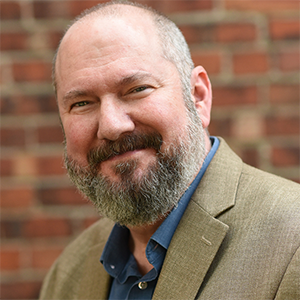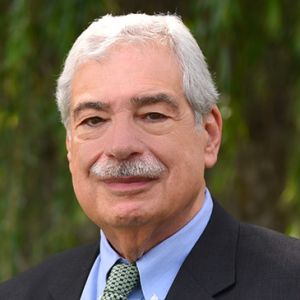 MARCY — Look out Silicon Valley, Route 128 in Boston, and Triangle Research Park. Phase-I construction of the Computer Chip Commercialization Center (known to all as Quad C) will be completed in the first quarter of this year, inaugurating the $1.5 billion Nano Utica Initiative launched by Gov. Andrew Cuomo in 2011.
MARCY — Look out Silicon Valley, Route 128 in Boston, and Triangle Research Park. Phase-I construction of the Computer Chip Commercialization Center (known to all as Quad C) will be completed in the first quarter of this year, inaugurating the $1.5 billion Nano Utica Initiative launched by Gov. Andrew Cuomo in 2011.
Nano is the moniker commonly used for nanotechnology and nanoscience, the study and application of extremely small things that can be used in scientific fields, such as chemistry, biology, physics, materials science, and engineering. “Small,” in this instance, means the manipulation of atoms and molecules. For those who are numerically inclined, a nanometer is one-billionth of a meter — or 25,400,000 nanometers equal an inch.
If you are not into numbers, consider this: If a marble were a nanometer, then one meter would be the size of the planet earth. Scientists and engineers are making materials on a nanoscale level to take advantage of properties such as higher strength, lighter weight, control of the light spectrum, and greater chemical reactivity.
(Sponsored)

Keeping Tabs on Employee Internet Use Could Create Employer Liability
Question: As a private sector employer trying to police our employees’ unauthorized use and/or abuse of our internet system, are we in danger of violating any privacy laws? Answer: If

New York State Now Requires 30-Minute Paid Lactation Breaks
For the past year or so, New York employers have been adapting to the State law protections granting employees returning from childbirth leave the right to express breast milk at
“Phase I of the Quad C construction is a 253,000-square-foot structure [sited on 12.5 acres] that will be managed by SUNY Polytechnic Institute’s Colleges of Nanoscale Science and Engineering and will provide leading-edge R&D to facilitate the commercialization of nanotechnology and nanoelectronics innovations, especially 3D packaging,” says Robert E. Geer, Ph.D., senior vice president and COO of SUNY Polytechnic Institute. 3D packaging refers to the multi-level, wafer-stacking of computer chips to reduce power consumption and improve bandwidth. The process requires specialized design and machinery to line up the dies and attach them, all of which has to be done in a cleanroom.
“I anticipate that when we open the doors, Quad C will be fully occupied by tenants,” continues Geer. “Quad C cost $125 million to construct and will generate 300 new jobs with annual salaries ranging from $35,000 to over $100,000. The facility features a 56,000-square-foot cleanroom stacked on two levels, in which tenants will invest $500 million in tools and materials. Quad C’s annual operating budget is projected to be $500 million. Subsequent phases of the Nano Utica initiative will increase job creation to 1,500 with an annual payroll of $136 million (average salary of $91,000). The initiative is managed by SUNY Poly, and the landlord is the Fort Schuyler Management Corp.”
Ft. Schuyler is a private, not-for-profit 501(c)(3) corporation formed by the State University of New York Research Foundation in partnership with the SUNY Polytechnic Institute Foundation.
Quad C is but one part of nanotech’s impact in the Mohawk Valley. “Development of an adjacent site here in Marcy includes the construction of a wafer-fabrication campus (located a half-mile from Quad C),” notes Geer.
“Mohawk Valley EDGE is acting as the lead developer of this project. The Marcy Center site plans are designed to contain an 8.3 million square-foot facility with up to three computer-chip fabrication facilities, each with a cleanroom of approximately 450,000 square feet. The purpose of this huge complex is to build the next generation of chip wafer. Gov. Cuomo’s initiative has brought together leading, global, high-tech companies — Advanced Nanotechnology Solutions, SEMATECH, Atotek, IBM, Lam Research, and Tokyo Electron — to transition from the current standard 300 mm. wafer to the new 450 mm. standard. The Marcy site is designed as a full-scale, manufacturing facility,” Geer says.
Both Quad C and the proposed Marcy Center are located on the SUNY Poly campus in Marcy. “Nano Utica, along with the nano development in the Albany area, represents the world’s most advanced, university-driven, research enterprise,” Geer contends. “We offer our students, faculty, and researchers a one-of-a-kind academic experience and, at the same time, provide more than 300 corporate partners access to an environment for leading-edge R&D and commercialization of nano innovations. New York’s investment is clearly designed to attract the next-generation of computer-chip manufacturing to the Mohawk Valley.”
The chip-making industry adds well over $300 billion in annual sales to the U.S. economy. Productivity has been its hallmark for several decades. According to the eponymous author of Moore’s Law, the number of transistors per square inch doubles every 18 months while prices steadily decline. (Shorthand: the speed of computer chips doubles.) In 1968, the price of a single transistor was $1; today, you can buy millions of transistors for $1.
Creating a technology cluster
Over the last decade, productivity growth in the semiconductor industry has averaged a 20 percent compounded annual increase compared to 5 percent for all manufacturing industries. “Because computer chips are such an important creator of wealth, the state is focused on creating a nanotechnology cluster based on a partnering strategy among education, government, and private enterprise,” posits Geer. “The key is to create a technology ecosystem that converts the research and development into the commercialization of the technology.”
The benefits of Nano Utica will be widespread. “SUNY Poly will garner an international reputation for its degree-granting — nanoscience, nanoengineering, nanobioscience, and nanoeconomics — in addition to the degrees in technology, the arts and sciences, and the professions it currently grants,” observes Geer. “Mohawk Valley Community College should see more demand for its two-year degree in semiconductor-manufacturing technology. The job market will expand substantially with 5,000 jobs at the Marcy Center and another 15,000 jobs indirectly related to the site when all facilities are up and running.”
The Mohawk Valley’s interest in nanotechnology dates back to the late 1990s. Plans to develop a nanocenter accelerated in July 2009 when New York state announced the Computer Chip Hybrid Integration Partnership (CHIP) between SUNY Institute of Technology (SUNYIT) and the College of Nanoscale Science, Engineering (affiliated at the time with the University at Albany) on the one hand, and leading computer-chip companies on the other. The partnership was encouraged by then-New York State Assemblywoman RoAnn Destito who, after seeing the success of Albany’s nano collaboration, promoted the creation of a high-tech venture between SUNYIT and the College of Nanoscale Science and Engineering. Destito visualized a cross-regional partnership to develop the region’s physical and intellectual abilities by creating a high-tech, business incubator/accelerator at SUNYIT.
New York state is committing $200 million over 10 years for purchasing equipment for the Nano Utica facilities. No private company will receive any state funds as part of the initiative.
The general contractor for phase-I of the Quad C project was M+W Group, a global, high-tech engineering and construction company headquartered in Stuttgart, Germany. In 2013, the company employed 8,500 people and generated revenues of about $3.5 billion. The architect of record was EYP Architecture & Engineering (Einhorn, Yaffee & Prescott), an Albany–based firm formed in 1972. EYP employs 360 people in eight U.S. cities.
About Geer
Geer has overall strategic and operational responsibility for the education and outreach programs at SUNY Polytechnic Institute’s College of Nanoscale Science and Engineering campus in Albany and the campus in Marcy. He also serves as the co-chair of the Mohawk Valley Regional Economic Development Council.
Prior to his appointment as SUNY Poly’s senior vice president and COO, Geer served as the acting president of SUNYIT. His prior employment was at CNSE where he held the posts of vice president for academic affairs and chief academic officer. He received his Ph.D. in condensed-matter physics from the University of Minnesota in 1992.
